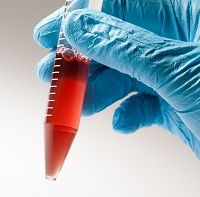Article
A Single Test to Detect All Viruses
Author(s):
A new diagnostic test, dubbed ViroCap, appears to detect virtually any virus that can infect humans and animals, according to the findings of a research group at Washington University School of Medicine in St. Louis.

A new diagnostic test, dubbed ViroCap, appears to detect virtually any virus that can infect humans and animals, according to the findings of a research group at Washington University School of Medicine in St. Louis.
The new test works differently from current tests that aren’t sensitive enough to detect low levels of the many thousands of viruses known to cause illness or only detect only those viruses suspected of being responsible for a patient’s given illness.
“With this test, you don't have to know what you're looking for,” said the study's senior author, Gregory Storch, MD, the Ruth L. Siteman Professor of Pediatrics at Washington University School of Medicine. “It casts a broad net and can efficiently detect viruses that are present at very low levels. We think the test will be especially useful in situations where a diagnosis remains elusive after standard testing or in situations in which the cause of a disease outbreak is unknown.”
Published September 22, 2015 online in Genome Research, the study found that ViroCap was able to detect viruses in patient samples that are not found by standard testing based on genome sequencing. Storch and colleagues believe the test could detect outbreaks of deadly viruses like Ebola, Marburg, and severe acute respiratory syndrome, along with more routine viruses like rotavirus and norovirus.
ViroCap works much like the gold-standard polymerase chain reaction (PCR) assays, sequencing and detecting viruses in patients samples, and is shown to be just as sensitive. However, the best PCR assays are only able to screen about 20 similar viruses at the same time.
The new test was evaluated in two sets of biological samples from patients at St. Louis Children’s Hospital. For the first set, standard testing relying on genome sequencing was able to detect viruses in 10 of 14 patients, but it failed to detect influenza B, parechovirus, herpes virus 1, and varicella-zoster virus. ViroCap, however, was about to detect viruses in these four children. In a second set of children with unexplained fevers, standard testing detected 11 viruses in eight children, but VIroCap found another seven, including adenovirus B type 3A.
“The test is so sensitive that it also detects variant strains of viruses that are closely related genetically,” said corresponding author Todd Wylie, an instructor of pediatrics at Washington University. “Slight genetic variations among viruses often can't be distinguished by currently available tests and complicate physicians' ability to detect all variants with one test.”
The ability of ViroCap to provide detailed genitive information about various strains of particular viruses enables subtypes to be easily identified; whereas standard testing identified a virus as influenza A, ViroCap indicated the virus to be the H3N2 subtype, which caused about 36,000 mortalities in the United States last flu season. Knowledge of the subtype can empower physicians with the knowledge that may lead to treatment alterations.
Storch and colleagues are in the process of additional research to validate the accuracy of ViroCap. “It also may be possible to modify the test so that it could be used to detect pathogens other than viruses, including bacteria, fungi and other microbes, as well as genes that would indicate the pathogen is resistant to treatment with antibiotics or other drugs,” said co-author Kristine Wylie, PhD, assistant professor of pediatrics at Washington University.





